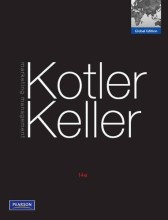Try our study magic for free
Summary: Fundamentals Of Cost Accounting | 9781526846266 | William N Lanen, et al
- This + 400k other summaries
- A unique study and practice tool
- Never study anything twice again
- Get the grades you hope for
- 100% sure, 100% understanding
a PDF, study it super fast
- No sign up, email or credit card needed!
- AI makes unlimited flashcards
- Get unlimited quizzes and tests
- Ask AI anything
- No sign up, email or credit card needed!
- Have and keep perfect overview
- Make flashcards, notes and mind maps
- Review, test and score!
Read the summary and the most important questions on Fundamentals of Cost Accounting | 9781526846266 | William N. Lanen; Shannon W. Anderson; Michael W. Maher
-
6 Fundamentals of Products and Service Costing
-
6.1 Explain the fundamental themes underlying the design of cost systems
-
Cost management system
System to provide information about costs of process, products and services used and produced by an organization. -
Objective cost management system
The object of this is to provide information about costs relevant to the decisions that managers make. -
Reasons to calculate product or service costs:
- Decision making
- Deciding what to sell
- Setting prices
- Knowing the cost of goods sold
- Knowing the cost of inventory
- Decision making
-
6.2 Explain how cost allocation is used in a cost management system
-
Design of a new cost system:
- Cost system should have a decision focus that meets the needs of decisions makers (the customers).
- Different cost information is used for different purposes.
- Cost information for managerial purpose must meet the cost-benefit test.
- Cost system should have a decision focus that meets the needs of decisions makers (the customers).
-
6.3 Explain how a basic product costing system works
This is a preview. There are 4 more flashcards available for chapter 6.3
Show more cards here -
Transfer in (work in proces)
Direct labor + indirect labor + manufacturing overhead + transferred % of the materialspurchased to work in process * purchased direct materials -
Cost of goods sold with work-in-process inventories
- Finished goods inventory (transfer out) + work in process inventory (transfer in)
- (direct materials + direct labor + overhead) /
stap 1 - Finished goods *
stap 2
-
6.5 Explain the operation of a two-stage allocation system for product costing
-
Product costing - two-stage allocation
- Predetermind overhead rate = total cost allocation base manufacturing overhead / total allocation base
- Manufacturing overhead = allocation base * predetermind overhead rate
- Total costs = direct materials costs + direct labor costs + manufacturing overhead
- Unit costs = total costs / units produced
- Predetermind overhead rate = total cost allocation base manufacturing overhead / total allocation base
-
6.6 Describe the three basic types of product costing system: job, process and operations
This is a preview. There are 4 more flashcards available for chapter 6.6
Show more cards here -
Continuous flow processing
System that generally mass-produces a single, homogeneous output in a continuing process. -
7 Job Costing
-
7.1 Explain what job and job shop mean
This is a preview. There are 3 more flashcards available for chapter 7.1
Show more cards here -
Job cost sheet
Record of the cost of the job kept in the accouting system. -
Subsidiary ledger account
Account that records financial transactions for a specific customer, vendor, or job. Provides detail for the control account.
- Higher grades + faster learning
- Never study anything twice
- 100% sure, 100% understanding
Topics related to Summary: Fundamentals Of Cost Accounting
-
Job Costing - Account for overhead using predetermined rates
-
Service Department and Joint Cost Allocation
-
Fundamentals of MCS
-
Planning & Budgeting
-
Business Unit Performance Measurement
-
Fundamentals of Variance Analysis - Prepare and use a profit variance analysis
-
Performance Measurement to Support Business Strategy






























